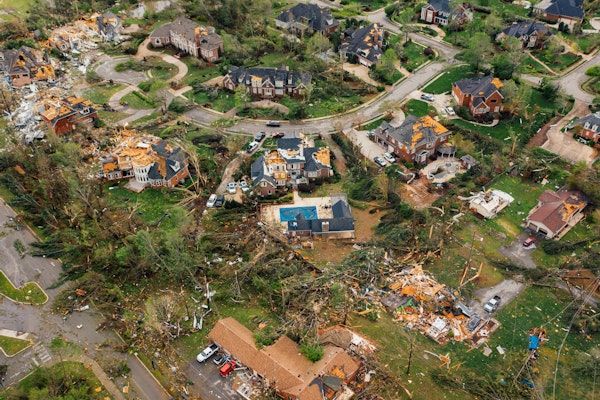
Insurer Says It Owes No Coverage for Kansas City Super Bowl Parade Shooting Lawsuit
Cincinnati Specialty Underwriters says its event liability policy excludes coverage for claims tied to a deadly shooting at the 2024 Super Bowl parade in Kansas City.
July 23
Insurance Industry
Liability
Litigation
Risk Management
Missouri

Fans Injured in FedEx Field Railing Collapse Reach Settlement With Washington Commanders
Four fans injured during a 2022 NFL game when a railing gave way at FedEx Field have settled negligence claims against the Washington Commanders following arbitration proceedings.
July 17
Insurance Industry
Liability
Litigation
Risk Management
Maryland

Lululemon Sues Costco Over Lookalike Apparel Alleging Consumer Confusion
Lululemon claims Costco’s low-cost apparel mimics its trademarked designs, misleading customers and violating trade dress protections under U.S. trademark law.
July 7
Insurance Industry
Liability
Litigation
Risk Management
California

Louis Vuitton Reports Data Breach Affecting Customer Information
Louis Vuitton Korea disclosed a data breach from unauthorized access to its system, exposing select customer information while assuring no financial data was compromised.
July 7
Insurance Industry
Liability
Risk Management
Technology

U.S. Cyber Insurance Premiums Experience First-Ever Decline Amid Pricing Adjustments
U.S. cyber insurance premiums declined by 2.3% in 2024, driven by rate reductions even as claims frequency rose, highlighting evolving market risks and pricing trends.
July 2
Insurance Industry
Liability
Risk Management
Technology

Swiss Re Identifies Rising Risks Including Declining Trust, Excess Mortality, and Digital Liability
Swiss Re’s 2025 SONAR report examines emerging structural risks including trust erosion, mortality fluctuations, and digital liabilities reshaping insurance claims and coverage.
July 2
Fraud
Liability
Life & Health
Property

Scattered Spider Cyber Threat Targets US Airline and Transport Industries
The FBI issues urgent warnings as the Scattered Spider cybercriminal group pivots its attacks from UK retailers to airlines and transport organizations across the US.
June 30
Education & Training
Liability
Risk Management
Technology

Italian Executives Receive Lengthy Prison Terms for PFAS Pollution
Executives of a chemical plant in Italy face significant jail sentences after court finds them responsible for extensive PFAS contamination affecting drinking water.
June 30
Legislation & Regulation
Liability
Litigation
Risk Management

Cyber Risk and Technology Trends Reshaping Business Resilience in 2025
Executives’ cyber risk awareness is climbing, yet a misplaced confidence in cyber resilience persists amid escalating threats and geopolitical instability.
June 30
Legislation & Regulation
Liability
Risk Management
Technology
California

How PFAS Influence Environmental Liability Risks in Construction Projects
Westfield Specialty’s Dennis Willette explores how PFAS contaminants shape environmental liability coverage in construction and why contractors need this insurance.
June 25
Legislation & Regulation
Liability
Property
Risk Management

Court Sides with Asbestos Victim’s Heirs Over Insurance Time-Bar Dispute
The Louisiana 4th Circuit held that ambiguous policy definitions and lack of proof bar insurers from enforcing a 36-month exclusion on a mesothelioma wrongful death claim.
June 19
Insurance Industry
Liability
Litigation
Workers' Compensation
Louisiana

New Guide Explains How Legal System Abuse Raises Insurance Costs and Threatens Coverage Availability
A new consumer guide from Triple-I and Munich Re US reveals how legal system abuse inflates claim costs, drives premium increases, and limits insurance accessibility.
June 16
Insurance Industry
Liability
Litigation
Risk Management

Former Prosecutor Wins $3 Million Jury Award After Retaliation Allegations in California
A California jury awarded $3 million to former prosecutor Tracy Miller, who said she was forced from her role after defending colleagues reporting sexual harassment.
June 9
Insurance Industry
Legislation & Regulation
Liability
Litigation
California

Property and Casualty Insurance Sees Best Underwriting Year Since 2013
The U.S. property and casualty insurance industry posted a 96.5% combined ratio in 2024, driven by a sharp recovery in personal lines and improved property performance.
May 9
Auto
Liability
Property
Workers' Compensation

Man Charged in Australia Drowning Case as Life Insurance Claims Raise Suspicion
A man returning from overseas has been charged with murdering his wife during a 2020 kayaking trip after police linked over $1 million in life insurance claims to the death.
May 6
Fraud
Liability
Litigation
Risk Management





